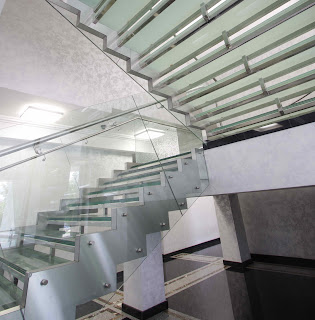Chemically Toughened Glass
Chemically
toughened glass (also “ion-exchanged toughened glass”, “thermochemically
modified glass”) is a type of glass, the strength of which is increased as a
result of chemical treatment. When destroyed, such glass still gives long sharp
fragments, like ordinary glass, therefore, if there are safety requirements for
such glass, it is necessary to laminate it with a film. However, chemically
hardened glass is six to eight times stronger than ordinary glass.
 |
| Chemically Toughened Glass |
During chemical
hardening, glass strength increases as a result of its surface treatment. The
glass is immersed in a bath containing potassium salt (usually potassium
nitrate) at 300° C. This allows potassium ions from the melt to replace sodium
ions on the glass surface. Potassium ions are larger than sodium ions,
therefore, replacing the latter in the crystal lattice, they cause its
deformation. In the near surface layer, compression forces appear. The
compressive force in the surface of the chemically treated glass can be up to
690 MPa.
The mechanism of
increasing the strength of glass is due to the fact that glass generally has a
relatively high compressive strength and low tensile strength. Since, as a
result of chemical hardening, compressive forces appear in the surface layer on
both sides, this allows the glass to be more flexed before tensile forces
appear in it.
There is also a
more complex two-step chemical hardening process, in which glass is first
processed in a bath with molten sodium nitrate at 450° C to saturate it with
sodium ions. And in the next stage, sodium ions will be replaced by potassium
ions. At this way, in comparison with the single-stage method, the number of
replaced ions increases, which leads to an increase in the strain and stress in
the surface.
 |
| Use of Chemically Toughened Glass |
Chemical hardening leads to an increase in strength, similar to the usual hardening of glass. But this process does not use extreme temperature drops, which can lead to deformation and warping, the appearance of optical defects. Thus, even thin-walled parts can be processed by the method of chemical hardening.
In addition,
unlike ordinary tempered glass, chemically tempered glass is easily cut and
processed after quenching without the appearance of cracks and damage. But here
a plot of about 20 mm from the cut loses its strength properties. Similarly,
with deep scratches, the surrounding areas of glass also lose strength acquired
during chemical hardening.